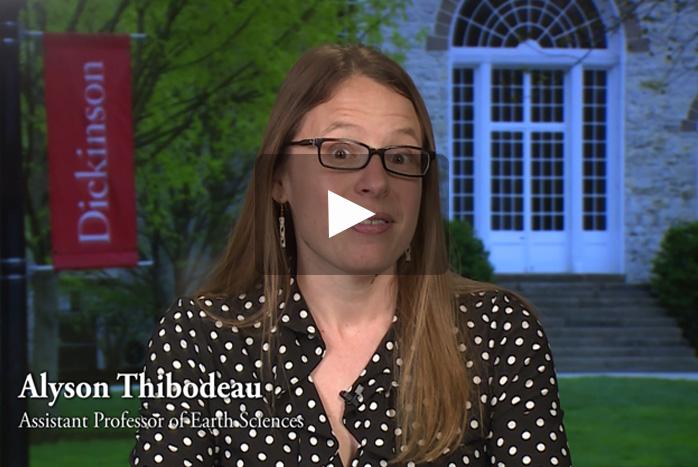The Fourth Extinction

Assistant professor of earth sciences Alyson Thibodeau
Video by Joe O'Neill
Professor explains the first study to investigate mercury levels during end-Triassic period
by Christine Baksi
There are five major known mass extinctions in Earth’s history. In a new study of the end-Triassic period—when the fourth extinction occurred—researchers have found higher than expected levels of mercury in the fossil record. Lead researcher Alyson Thibodeau, assistant professor of earth sciences, says these findings published in the journal Nature Communications indicate that massive volcanism played a large role in the extinction and that life did not recover until this volcanism ceased. Similar studies have used mercury to investigate the role of volcanism during other mass extinctions, but this is the first study to investigate mercury levels during end-Triassic period.
As CO2 continues to rise, it is critical to consider how the Earth responded to similar perturbations in the past. “This study is of interest to a popular audience because it investigates the biological/ecosystem response to massive environmental changes that were at least partially driven by the release of large amounts of CO2 and other volatiles to the atmosphere by massive volcanism,” says Thibodeau.
Learn more
Published April 5, 2016